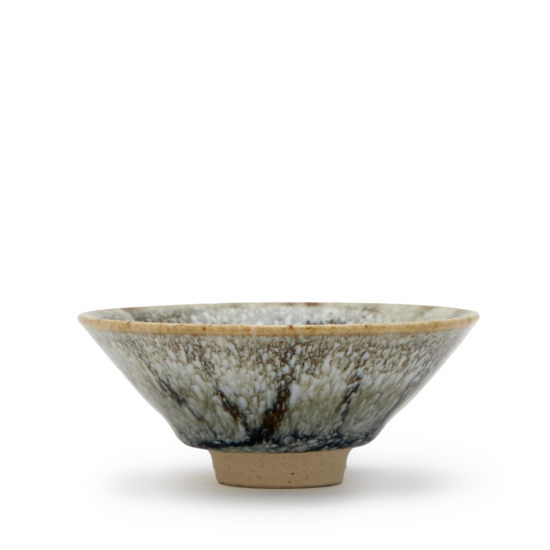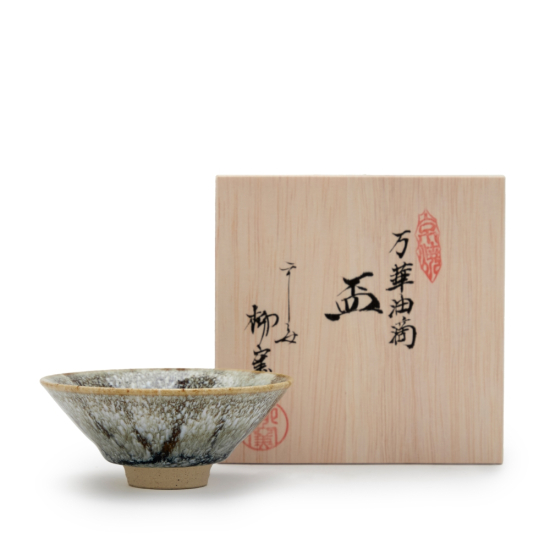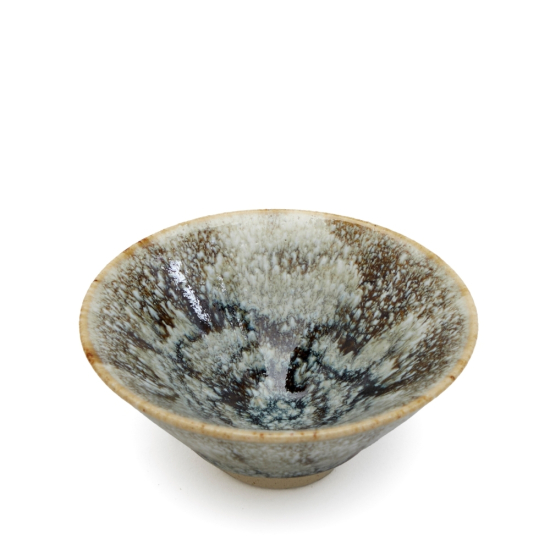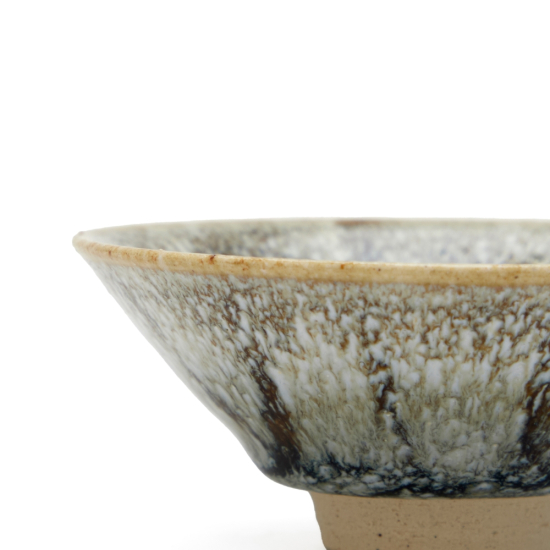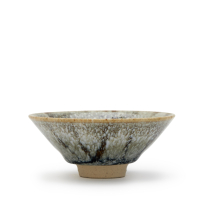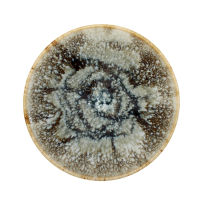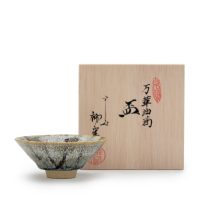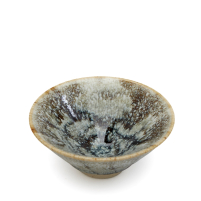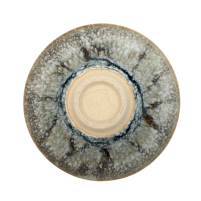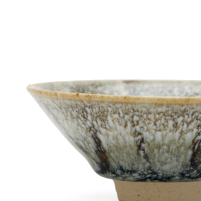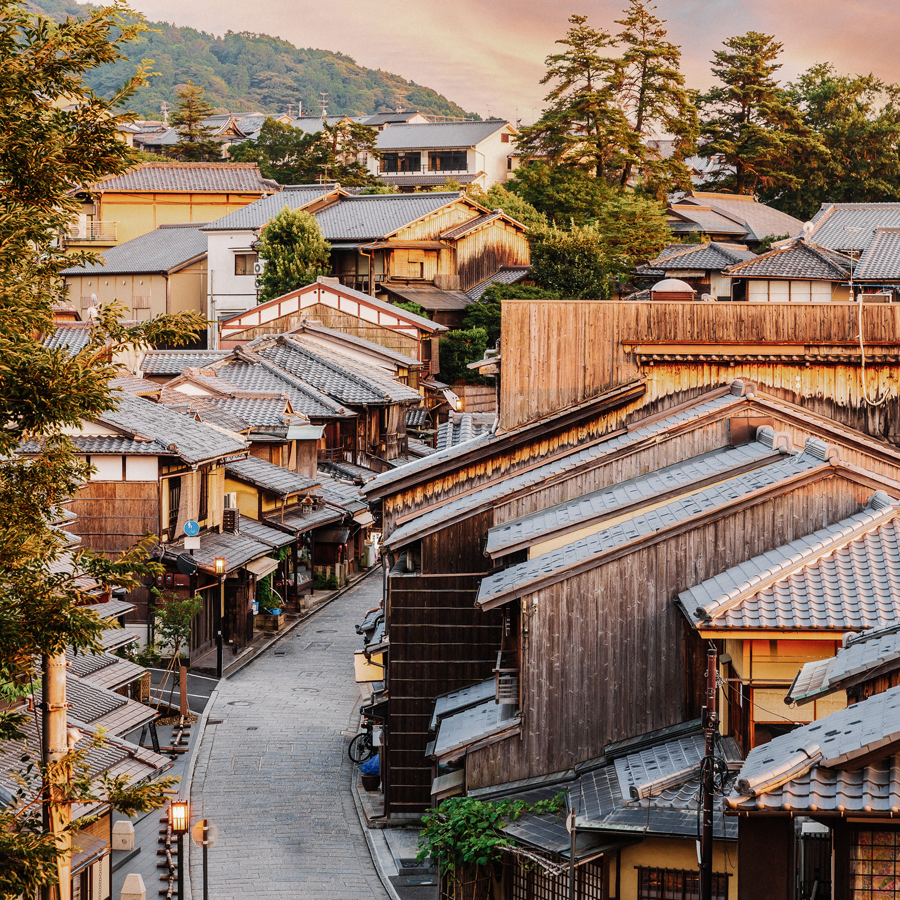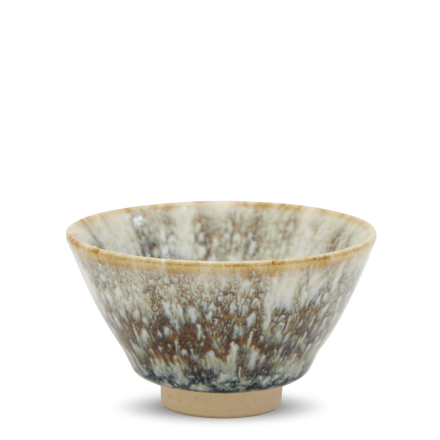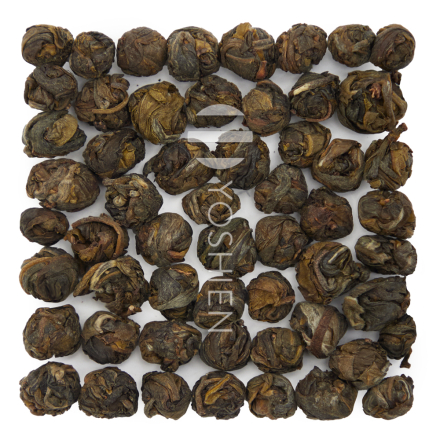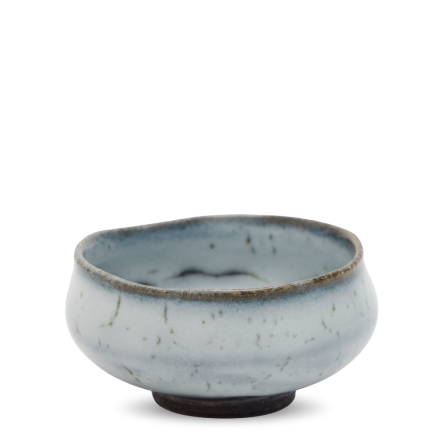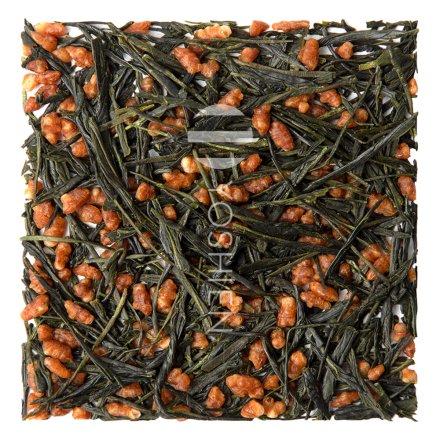Before use please soak in warm water for a few minutes to help prevent staining. After use, clean and dry thoroughly to avoid lingering odors. Do not put in dishwasher or microwave. Exposure to very high temperatures or rapid temperature changes may cause damage.
Sake Cup
Sakazuki Mange Yuteki
Studio Yanagi
SKU
0182
Savour each sip of sake with this exquisite Sakazuki cup, made from ceramic and covered in a silvery kaleidoscopic oil spot glaze. Handcrafted in Kyoto, this traditional wide, shallow sake cup is designed to amplify aroma – making it equally suitable for serving the finest teas. Perfect for special occasions from weddings to Chaji tea ceremonies.
| Item | Sakazuki sake cup |
|---|---|
| Colour | Silver |
| Dimensions | Ø9 x 3.5cm |
| Volume | 60ml |
| Origin | Kyoto, Japan |
| Studio | Yanagi 柳窯 |
| Material | Ceramic |
| Glaze | Mange Yuteki ("kaleidoscopic oil spot") |
| Stamp | Seal to base |
| Packaging | Wooden box (Kiribako) |
Each item is handmade and unique therefore size, colour and finish will vary slightly.
In stock



